On December 21, Yamaha Europe presented the Yamaha XR9 Carbona, a motorcycle that we have created within the Yamaha Yard Build program in which, for many years now, the best bike builders in the world transform Yamaha motorcycles to turn them into truly unique creations.
When Yamaha asked us to participate in their project, from the beginning we thought that for us, because of the way we work, the idea of creating a design that we could produce multiple units was much more attractive than creating a single prototype. This would allow us to offer our customers either the possibility of buying a kit to transform their Yamaha or the possibility of buying a complete motorcycle, customized to their liking in terms of finishing, components, etc.
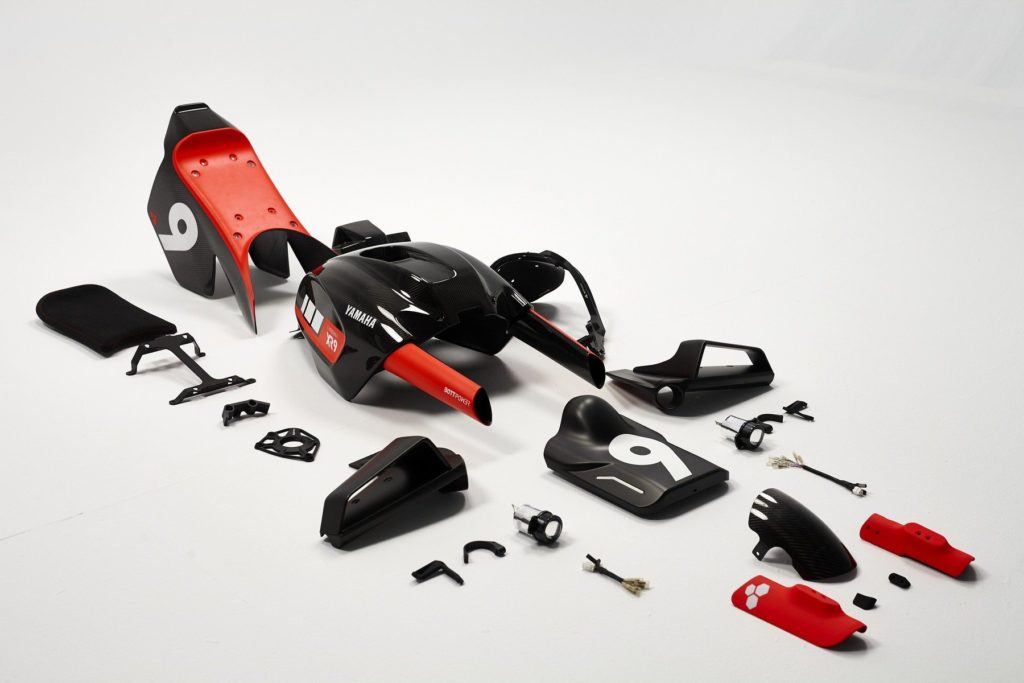
We took a look at the entire range of Yamaha bikes, and the one we found the most interesting to take as a starting point was the XSR900, for several reasons. The first because the 900 cc three-cylinder engine is super fun, with that character that only three-cylinder engines offer, with the best of two worlds, the torque at low rpm of a two-cylinder and the ability to rev up of a tetra. In addition, this engine has traction control, several maps, etc.
From the beginning, our idea was to create a bike based on the experience we gained from our Pikes Peak racing project in 2017: A lightweight, agile and precise bike to be able to ride quickly and safely on the open road.
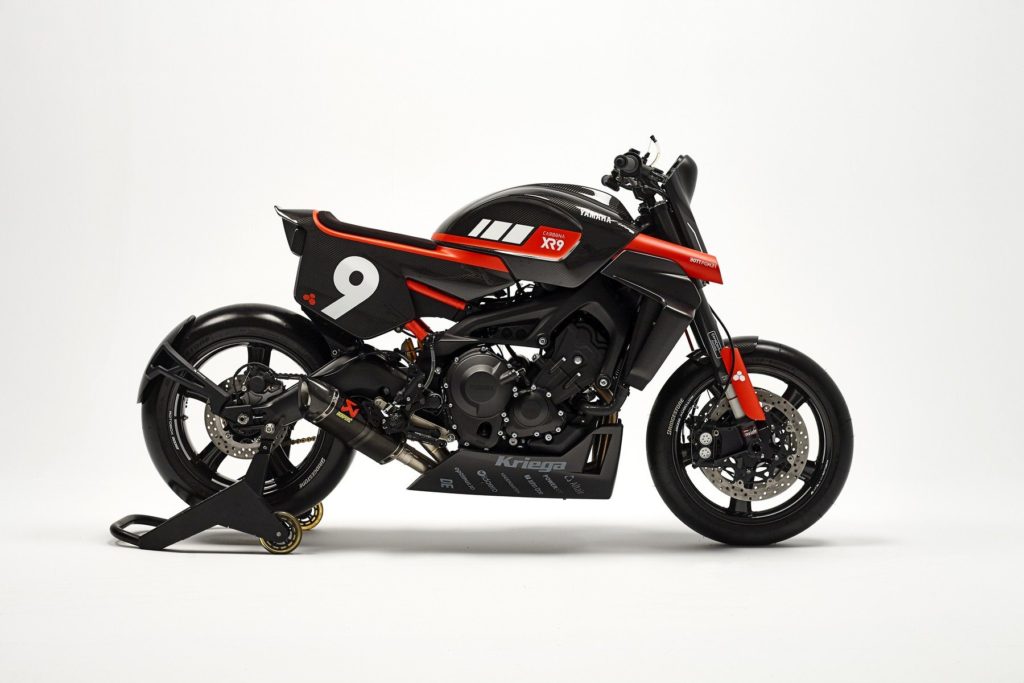
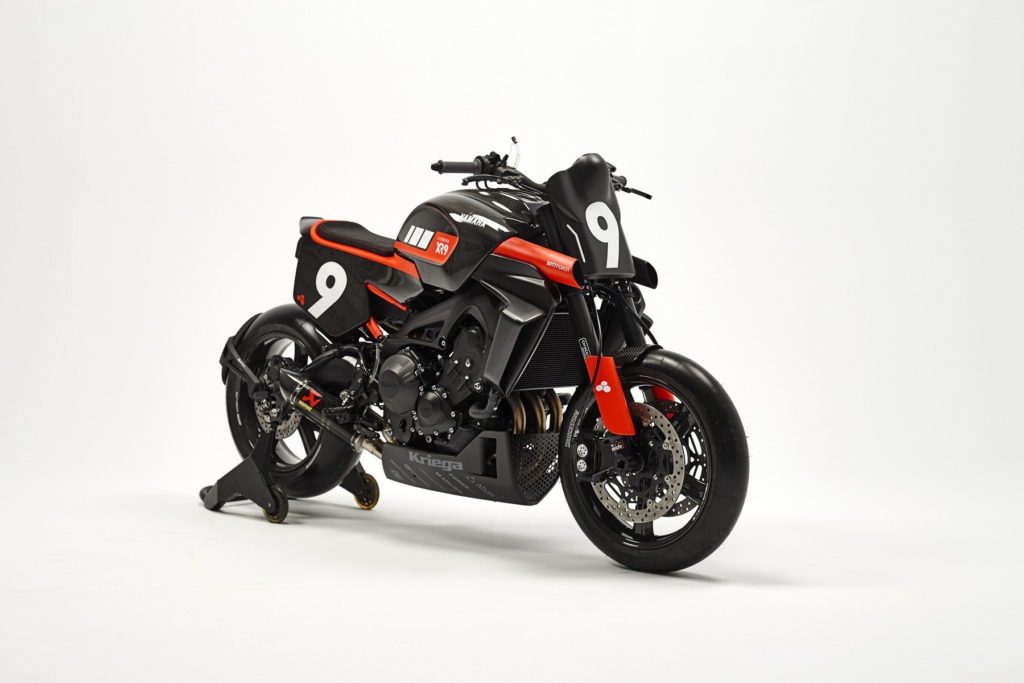
Logically, in the first unit we built of the XR9 Carbona, we tried to take this approach to the extreme. For example, in order to reduce the weight as much as possible, we used the same recipe that made with the XR1R from Pikes Peak: mount Rotobox carbon wheels, a Ceracarbon fork with carbon inner and outer tubes and Öhlins TTX25 cartridges. We also mounted titanium axles and screws and carbon fiber bodywork.
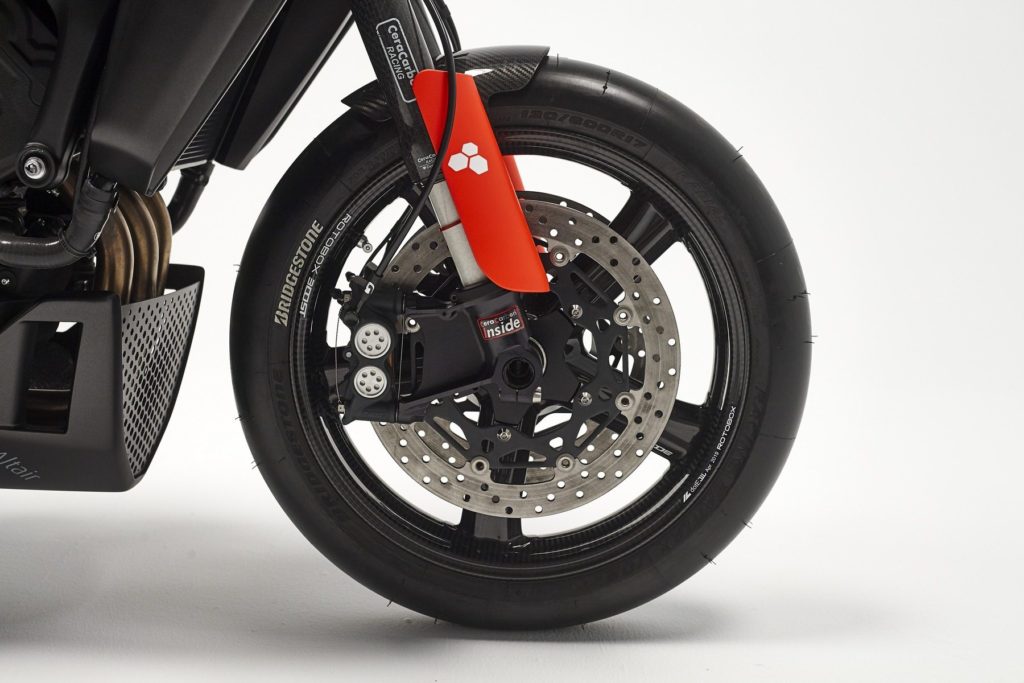
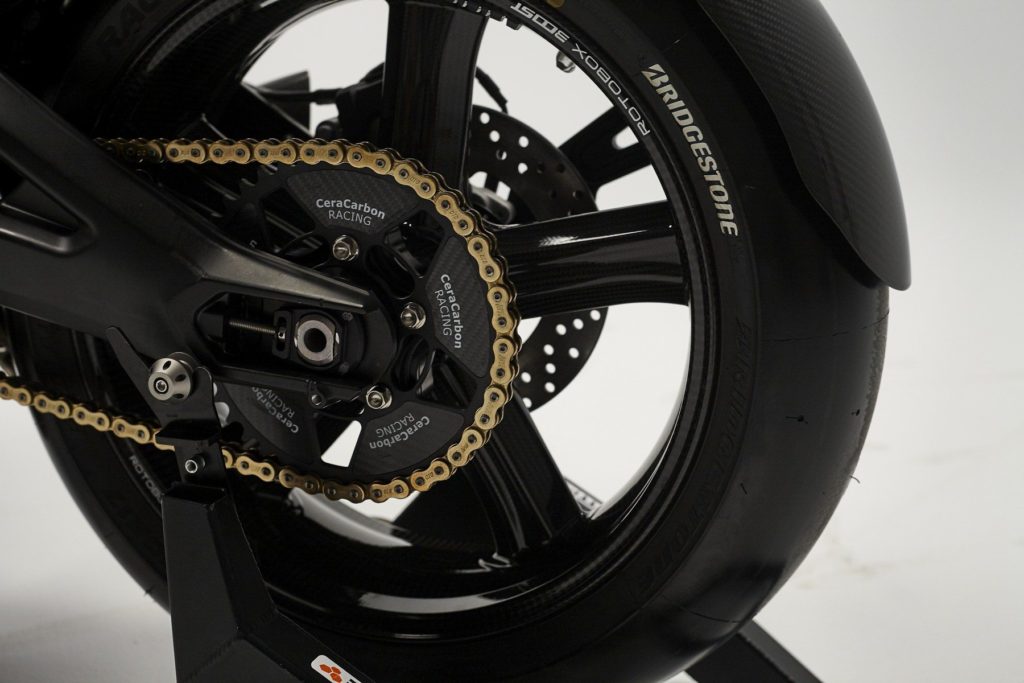
Mounting our TA-KE handlebar made of composite materials also helped to reduce some weight.
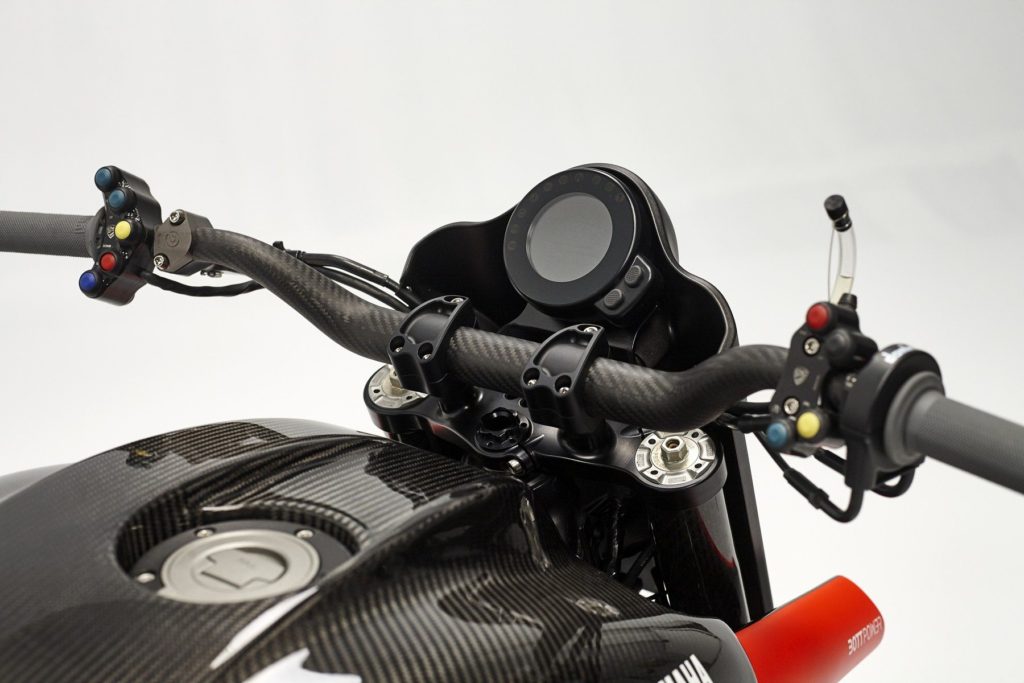
In this way, we managed to reduce the weight by 29 kilos. The XSR900 from which we started weighs 187.5 kilos with water and oil and without gasoline, and the XR9 weighs 158.5 kilos under the same conditions. We are still working to keep losing weight and we believe that we can still lose a few more kilos.
Regarding geometries, in our prototype, we have mounted a Yamaha R1 front end.
Actually, in the end, the only thing that remains of the Yamaha R1 is the brakes (which we will also change shortly), and the dimensions of the components.
For mounting an R1 front end we designed a custom triple clamp, which allows an R1 fork, wheels and brakes to be mounted on an XSR900 chassis (also, of course, on an MT09).
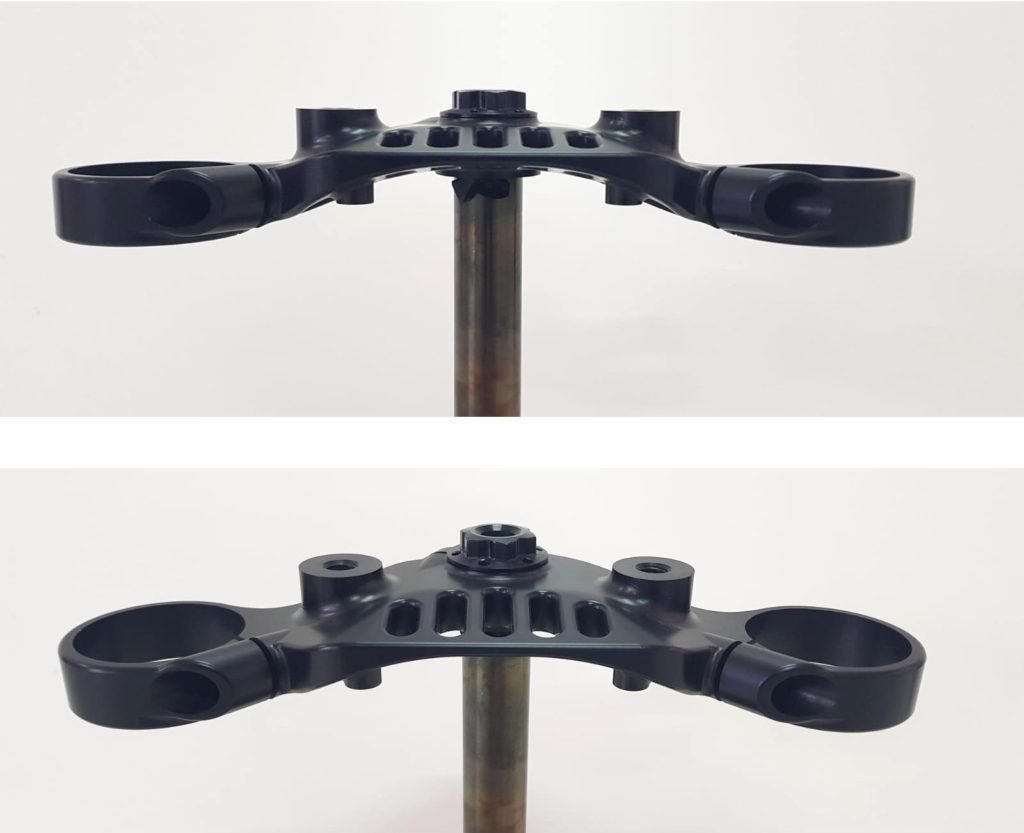
As for the rear axle, for now, we mount an Öhlins shock with the standard linkage system.
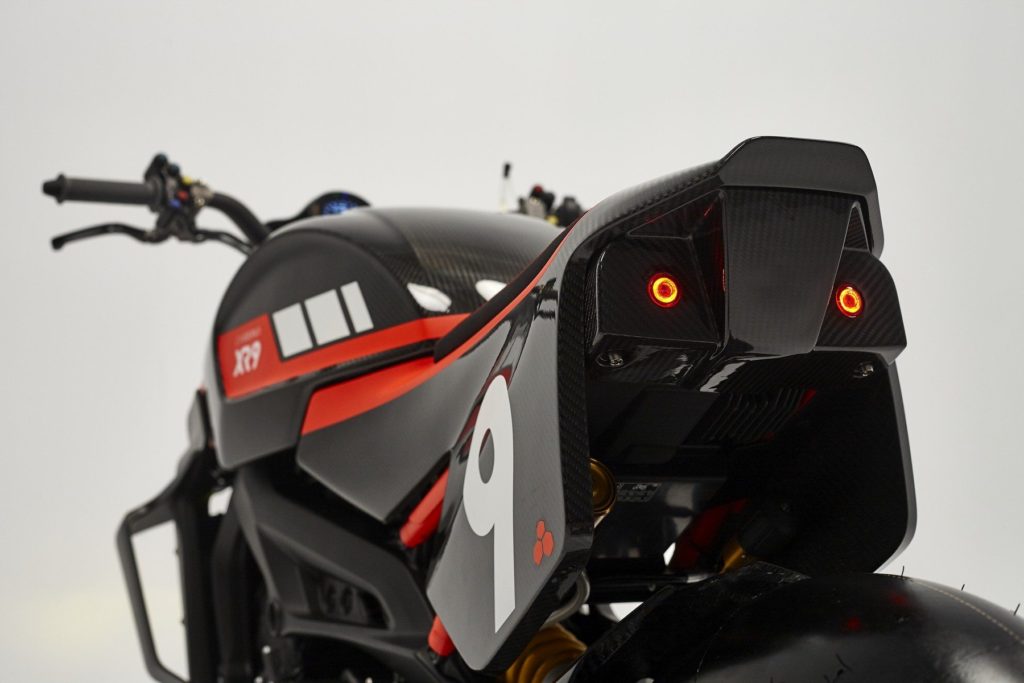
As far as the engine is concerned, for now, everything is standard. All we have done is mounting an Akrapovic exhaust. We still have to modify the injection map to adapt it to the new exhaust.
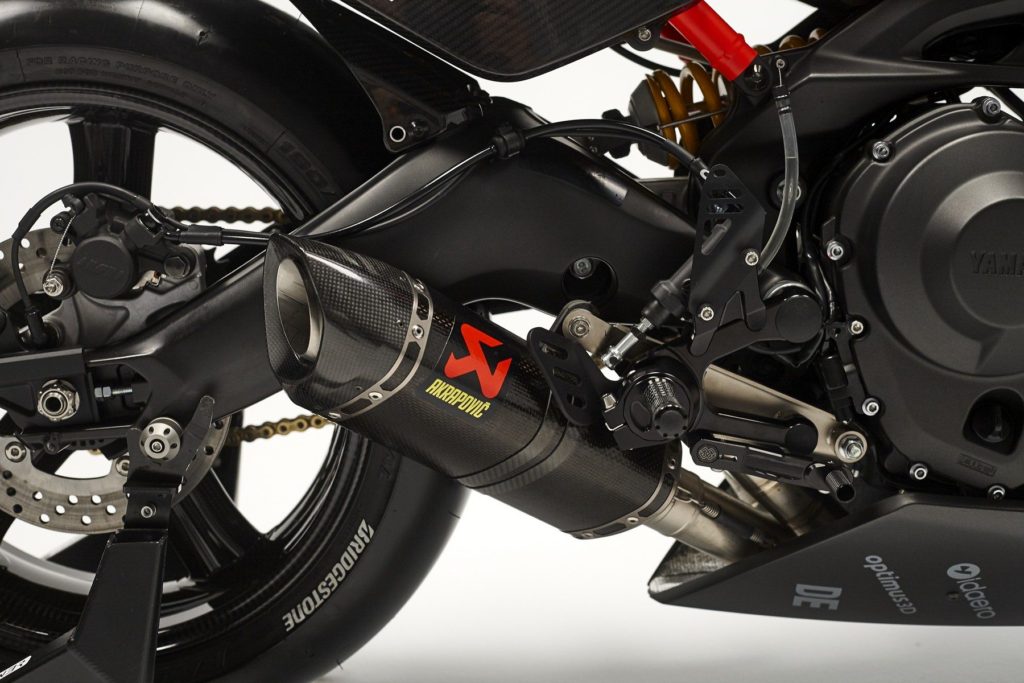
On an aesthetic level, the biggest difficulty this project had was that the XSR900 has a rather bulky fuel tank, which would completely condition the look of the bike. Our chief designer, Hugo van Waaijen, has done a great job in this regard, creating a bike with a muscular look where the fuel tank is well integrated with the rest of the bike.
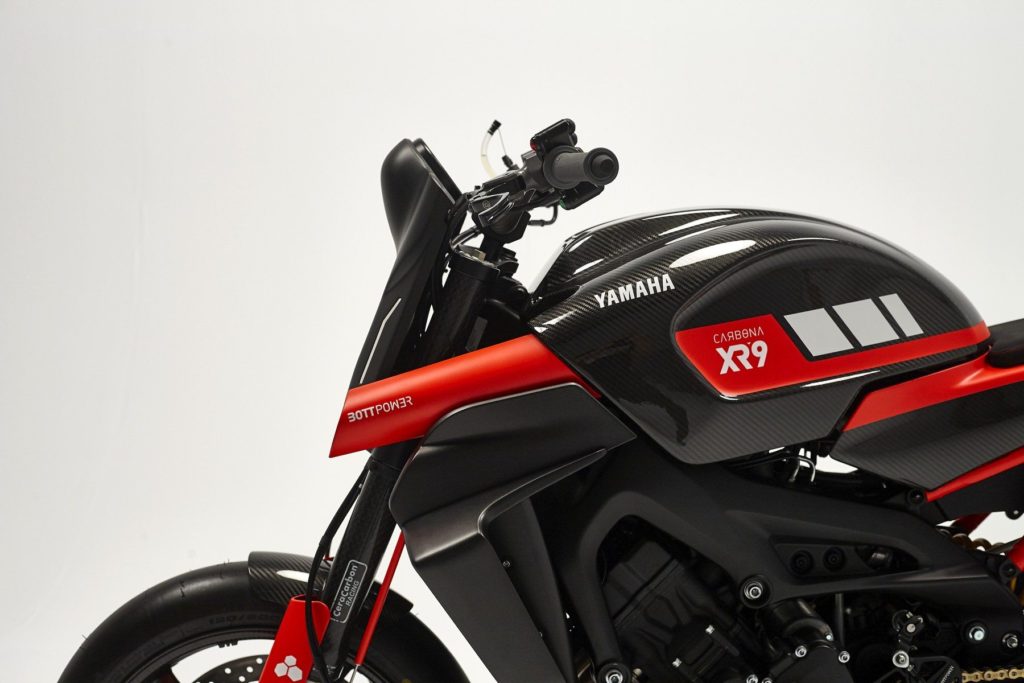
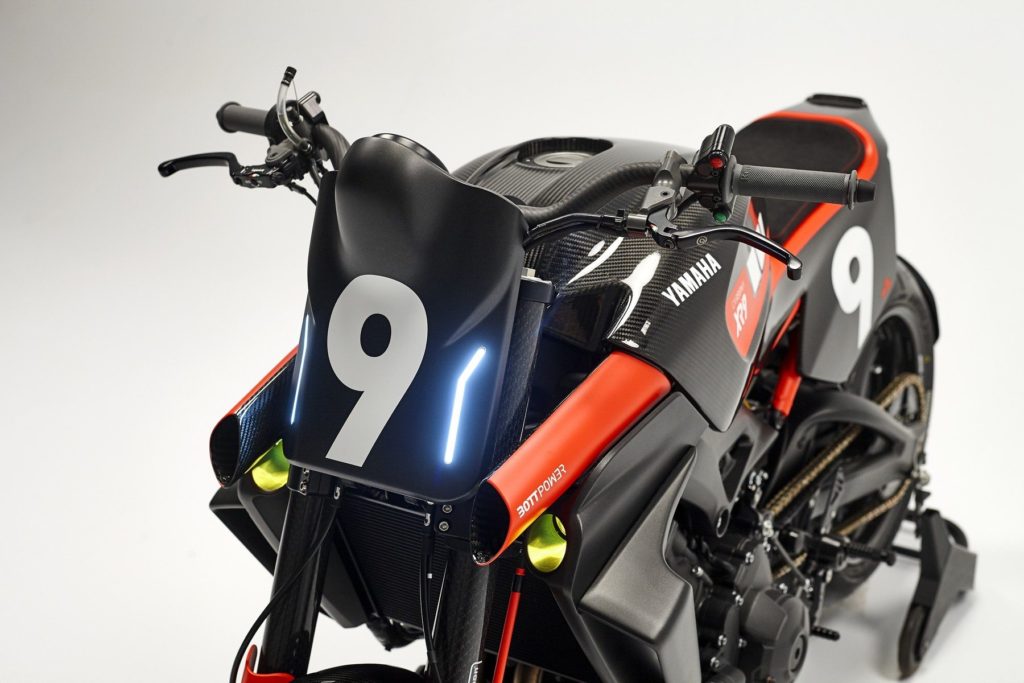
In the initial design phase, the work of Rémy Roland was also very important. He created a lot of sketches from which we were taking ideas for the final design.
The bike’s design has things in common with the XR1R we raced at Pikes Peak. It still has a touch of flat track aesthetics with the front and side number plates. It also has two intake ducts that, in addition to giving it an aggressive look, lead fresh air into the airbox.
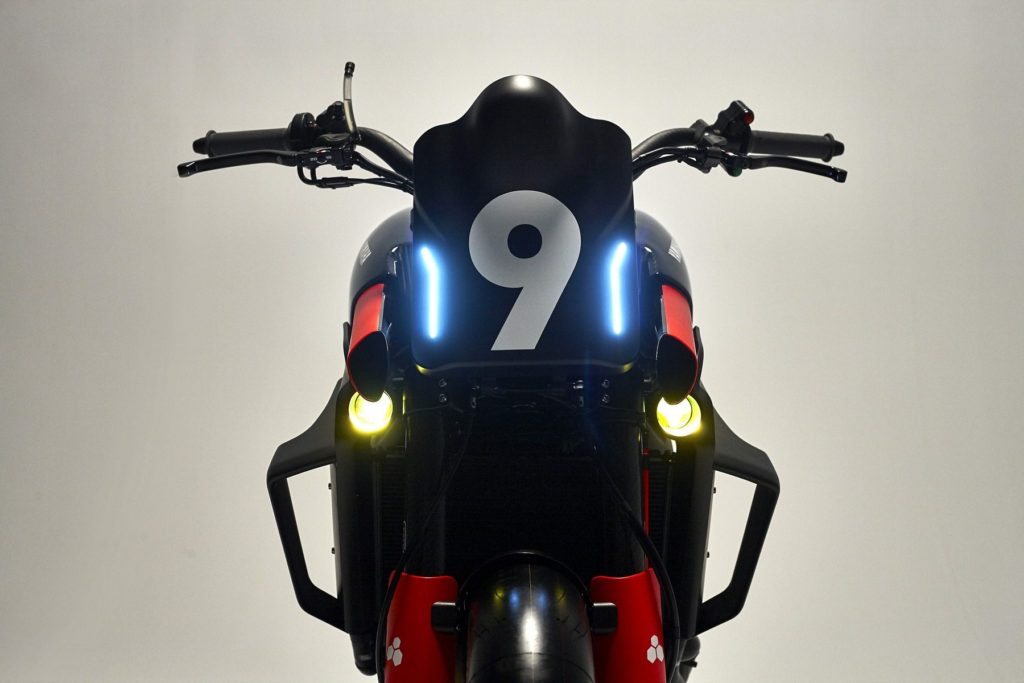
The bike also has a series of components that we have developed, which are valid for mounting on a standard Yamaha MT09 or XSR900: the sprocket cover, the license plate holder, or the front fender.
We are very satisfied with the final result and with the reception that the project has had once it has been presented. Also with having the opportunity to work with a brand like Yamaha.
Our plan now is to continue working on the development of our prototype and also, of course, to sell both complete bikes and kits around the world.
In this sense, we are working to expand our network of distributors, and also improving our website so that any client can easily buy a kit or a complete motorcycle.